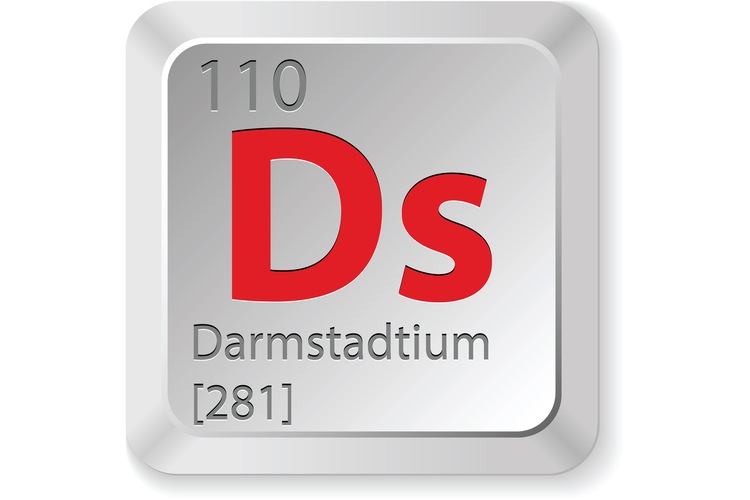Facts About Darmstadtium

Atomic Number: 110 Atomic Symbol: Ds Atomic Weight: [281] Melting Point: Unknown Boiling Point: Unknown
Word origin: Darmstadtium is named for the city of Darmstadt, Germany, where it was discovered. The name was confirmed by the International Union of Pure and Applied Chemistry in 2003.
Discovery: On Nov. 9, 1994, element 110 was discovered by the Gesellschaft fur Schwerionenforschung team led by Peter Armbruster and Gottfried Münzenber. They used a linear accelerator to bombard more than a billion billion nickel ions at a lead target for a week, resulting in one atom of darmstadtium-269 (269Ds).
Properties of darmstadtium
Darmstadtium is a radioactive, synthetic element about which little is known. It is classified as a metal and is expected to be a solid at room temperature. The first produced atoms had a lifetime of only 1/100th of a second, but scientists later produced heavier, more stable versions.
Darmstadtium has nine isotopes with known half-lives, the most stable of which is darmstadtium-281 (281Ds), with a half-life of about 20 seconds. It has two possibilities for decay: 85 percent of the time, it decays through spontaneous fission, but 15 percent of the time it decays through alpha decay.
The atomic weight for manmade transuranium elements is based on the longest-lived isotope. These atomic weights should be considered provisional since a new isotope with a longer half-life could be produced in the future. [See Periodic Table of the Elements]
Sources of darmstadtium
Darmstadtium is produced artificially. It is made by fusing a nickel and lead atom together, and is a rare reaction occurring only when nickel atoms are projected at a lead target at a very specific velocity.
Uses of darmstadtium
Only a few atoms of darmstadtium have ever been made, and they are currently only used in scientific study.
(Sources: Los Alamos National Laboratory, Jefferson Lab)
Sign up for the Live Science daily newsletter now
Get the world’s most fascinating discoveries delivered straight to your inbox.











